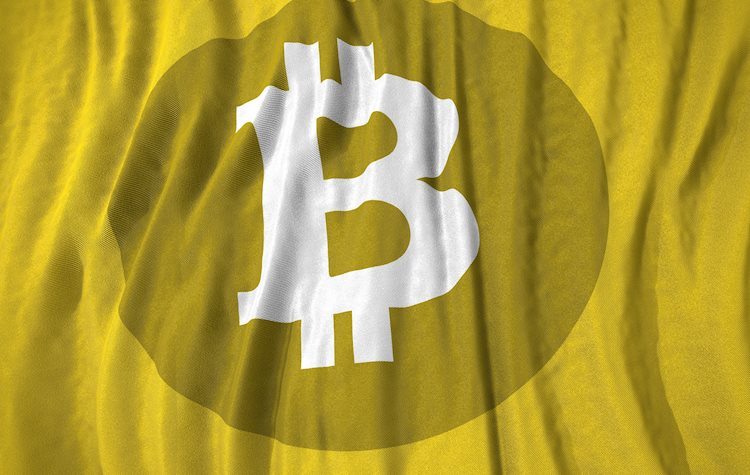Share:
S&P 500 futures are down 0.43%, Dow Jones futures drop 0.19%, and Nasdaq futures lose 0.77%.
S&P 500 (SPX) lost 0.1% on Monday, Dow Jones (DJIA) gained 0.33% and Nasdaq (IXIC) fell 0.30%.
US CPI Data Forecast: Forecast is for 3.7% core inflation and 2.9% headline.
The Utilities Sector was the best-performing major sector in the S&P 500 on Monday, rising 1.14% on the day. On the other hand, the Technology Sector sank 0.77%.
V.F. Corp (VFC) rose 14% to $17.43 as the top gainer of the first trading day of the week. The biggest decliner is Motorola Solutions Inc. (MSA), down over 3.2%.
The Federal Reserve Bank of New York’s latest Survey of Consumer Expectations showed on Monday that the US consumers’ one-year inflation expectation held steady at 3%.
The US Bureau of Labor Statistics (BLS) announced on Friday that it revised the monthly Consumer Price Index (CPI) increase for December lower to 0.2% from 0.3%.
The BLS will release January CPI data ahead of the opening bell on Tuesday. The headline annual CPI is forecast to rise 2.9% on a yearly basis, at a softer pace than December’s 3.4%. The Core CPI, which excludes volatile food and energy prices, is expected to increase 3.7%.
The CBOE Volatility Index (.VIX) rose 7.7% on Monday and was up more than 1% at the time of writing on Tuesday.
Dallas Federal Reserve (Fed) Bank President Lorie Logan said that there is no urgency to cut interest rates. Logan acknowledged that there has been “tremendous progress” on bringing down inflation but noted that she would want to see further evidence on inflation to confirm the progress is durable.
Airbnb Inc. (ABNB) and MGM Resorts International (MGM) are among top companies that will release earnings reports after the closing bell.
Later in the week, January Retail Sales, Industrial Production and Producer Price Index (PPI) data will be featured in the US economic calendar.
What is the S&P 500?
The S&P 500 is a widely followed stock price index which measures the performance of 500 publicly owned companies, and is seen as a broad measure of the US stock market. Each company’s influence on the computation of the index is weighted based on market capitalization. This is calculated by multiplying the number of publicly traded shares of the company by the share price. The S&P 500 index has achieved impressive returns – $1.00 invested in 1970 would have yielded a return of almost $192.00 in 2022. The average annual return since its inception in 1957 has been 11.9%.
How are companies chosen to be included in the S&P 500?
Companies are selected by committee, unlike some other indexes where they are included based on set rules. Still, they must meet certain eligibility criteria, the most important of which is market capitalization, which must be greater than or equal to $12.7 billion. Other criteria include liquidity, domicile, public float, sector, financial viability, length of time publicly traded, and representation of the industries in the economy of the United States. The nine largest companies in the index account for 27.8% of the market capitalization of the index.
How can I trade the S&P 500?
There are a number of ways to trade the S&P 500. Most retail brokers and spread betting platforms allow traders to use Contracts for Difference (CFD) to place bets on the direction of the price. In addition, that can buy into Index, Mutual and Exchange Traded Funds (ETF) that track the price of the S&P 500. The most liquid of the ETFs is State Street Corporation’s SPY. The Chicago Mercantile Exchange (CME) offers futures contracts in the index and the Chicago Board of Options (CMOE) offers options as well as ETFs, inverse ETFs and leveraged ETFs.
What factors drive the S&P 500?
Many different factors drive the S&P 500 but mainly it is the aggregate performance of the component companies revealed in their quarterly and annual company earnings reports. US and global macroeconomic data also contributes as it impacts on investor sentiment, which if positive drives gains. The level of interest rates, set by the Federal Reserve (Fed), also influences the S&P 500 as it affects the cost of credit, on which many corporations are heavily reliant. Therefore, inflation can be a major driver as well as other metrics which impact the Fed decisions.
Share:
Feed news
Information on these pages contains forward-looking statements that involve risks and uncertainties. Markets and instruments profiled on this page are for informational purposes only and should not in any way come across as a recommendation to buy or sell in these assets. You should do your own thorough research before making any investment decisions. FXStreet does not in any way guarantee that this information is free from mistakes, errors, or material misstatements. It also does not guarantee that this information is of a timely nature. Investing in Open Markets involves a great deal of risk, including the loss of all or a portion of your investment, as well as emotional distress. All risks, losses and costs associated with investing, including total loss of principal, are your responsibility. The views and opinions expressed in this article are those of the authors and do not necessarily reflect the official policy or position of FXStreet nor its advertisers. The author will not be held responsible for information that is found at the end of links posted on this page.
If not otherwise explicitly mentioned in the body of the article, at the time of writing, the author has no position in any stock mentioned in this article and no business relationship with any company mentioned. The author has not received compensation for writing this article, other than from FXStreet.
FXStreet and the author do not provide personalized recommendations. The author makes no representations as to the accuracy, completeness, or suitability of this information. FXStreet and the author will not be liable for any errors, omissions or any losses, injuries or damages arising from this information and its display or use. Errors and omissions excepted.
The author and FXStreet are not registered investment advisors and nothing in this article is intended to be investment advice.





